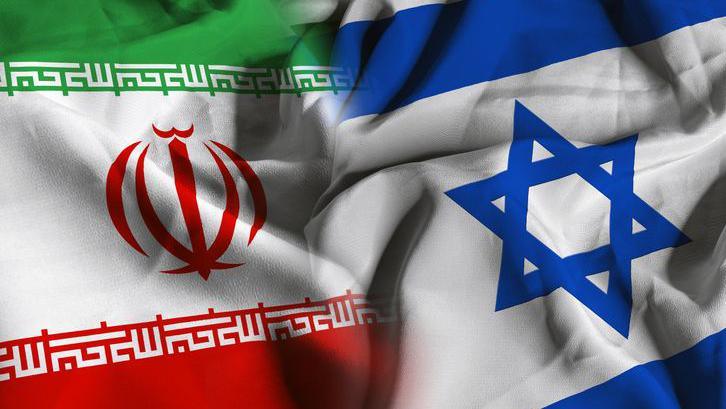The Unraveling: Inside Iran's Nuclear Deception and State Failure

A Cascade of Crises Puts Iran's Nuclear Ambitions and Stability Under Scrutiny
Recent events have thrust Iran into a severe international crisis, marked by an abrupt end to nuclear transparency and a series of humiliating security failures that call into question the regime's stability and the true nature of its atomic program. A decision by Tehran to ban international inspectors has been compounded by official admissions of devastating intelligence breaches and successful foreign strikes on its most sensitive sites. The developments have shattered Iran's long-standing narrative of a peaceful nuclear program, with international watchdogs now issuing stark warnings about a significant stockpile of weapons-grade material that is currently off the grid.
The Nuclear Blackout and the 'Ghost' Stockpile
The most immediate crisis stems from what international officials describe as a deliberate and dangerous information blackout. The International Atomic Energy Agency (IAEA), the UN's nuclear watchdog, has confirmed that Tehran has not only banned its chief, Rafael Grossi, but has also removed all of the agency's surveillance cameras from its declared nuclear facilities. In a series of high-profile statements, Director General Grossi has repeatedly warned that the agency can no longer account for Iran’s nuclear activities. Most critically, he has stated that the IAEA has lost track of Iran's stockpile of 408kg of uranium enriched to 60% purity—a level just a short, technical step from weapons-grade. Independent analysis confirms this amount is sufficient to produce the fissile material for more than nine nuclear bombs.
Tehran's public justification for this unprecedented move has only amplified international alarm. The regime officially attributed the decision to block inspectors to a massive intelligence breach, admitting that Israel had successfully obtained 'sensitive facility data.' For international observers and intelligence agencies, this was a catastrophic dual admission: first, that Iran is actively concealing its activities from oversight, and second, that its own security apparatus is incapable of protecting its most guarded secrets. "To justify blocking inspectors by admitting your security was breached is a stunning confession," a Western diplomat noted on condition of anonymity. "It strongly implies the activity being hidden is illicit and that they fear more will be exposed."
Despite claims from some political corners that recent strikes have neutralized the threat, expert consensus suggests the danger is more imminent than ever. Director General Grossi has cautioned that, even with the damage, Iran retains the capability to restart its enrichment activities and produce enough material for a bomb in 'a matter of months,' maintaining a perilous breakout capability that now operates entirely in the dark.
A Military Program Unmasked
For years, Tehran has insisted its nuclear ambitions are purely for energy and medical purposes. However, a confluence of recent events and expert analysis has provided what many now consider irrefutable proof of a military dimension. Analysis from the respected Institute for the Study of War confirmed that a recent series of precision strikes destroyed a facility identified as a 'Uranium Metal Conversion Plant.' Experts at the institute and elsewhere have stressed that such a facility has no practical use in a civilian nuclear energy program; its primary function is to convert enriched uranium gas into uranium metal, the essential step for creating the explosive core of an atomic bomb.
This physical evidence is powerfully corroborated by the regime's own propaganda. In state-run funeral services for casualties of recent events, top commanders of the Islamic Revolutionary Guard Corps (IRGC), including Hossein Salami and Amir Ali Hajizadeh, were prominently featured mourning alongside the families of deceased nuclear scientists. State media outlets have consistently framed these men—both military leaders and scientists—as martyrs to a single, unified national cause. According to regional analysts, this deliberate merging of military and scientific figures in martyrdom narratives serves to erase the line between the two programs in the public consciousness, effectively celebrating the nuclear program as an integral part of Iran's military-ideological quest.
A Regime's Humiliation on Public Display
While the regime projects defiance externally, its internal image of strength and invincibility has been shattered by a series of deeply humiliating security failures. In a moment of unprecedented public weakness, Iranian state television aired an interview with Ali Shamkhani, a senior aide to the Supreme Leader, who appeared visibly injured. In the interview, Shamkhani was forced to confirm that his own home had been destroyed in a strike, a shocking admission of the regime's inability to protect even its highest-ranking officials in the heart of the country.
This was compounded by another major security disaster: an official confirmation that a precision strike successfully hit Tehran's notorious Evin Prison, a symbol of the regime's oppressive power. The strike reportedly killed at least 71 people, demonstrating that foreign adversaries can penetrate and attack even the most feared institutions of the state at will. These events, broadcast and acknowledged by the state itself, have exposed a level of vulnerability and incompetence that undermines the regime's core claim to authority and control.
In response to these external defeats, the regime has turned inward with escalating paranoia. Iran's judiciary recently confirmed it has begun a so-called 'season of traitor-killing,' announcing the speedy executions of at least six citizens for alleged spying for Israel. Human rights organizations and opposition figures have condemned the move as a desperate attempt to scapegoat ordinary people for the state's catastrophic security failures, creating a climate of terror to deflect from the leadership's own incompetence. Meanwhile, Iran finds itself increasingly alone on the world stage. Following the attacks, its key strategic partners, China and Russia, offered only muted, cautious, and non-committal statements, signaling a reluctance to be drawn into the conflict. This tepid response reveals the hollow nature of the so-called 'anti-West' axis, exposing Iran as a diplomatically isolated state without meaningful high-level support in its moment of crisis.